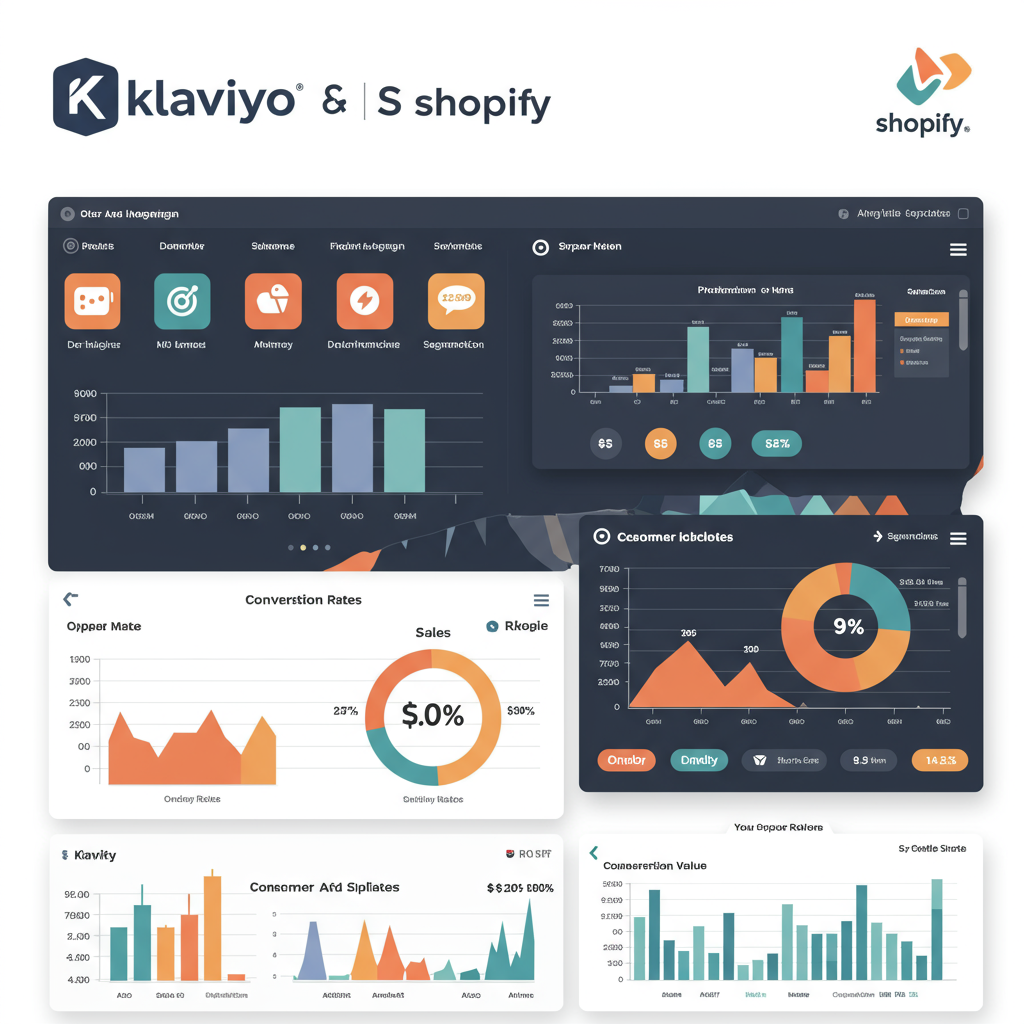Unlock the full potential of your customer data and supercharge your marketing automation.
As an e-commerce merchant, I know you’re constantly looking for ways to grow your business, build stronger customer relationships, and ultimately, drive more sales. In today’s competitive landscape, generic marketing just doesn’t cut it anymore.
That’s where the powerful combination of Klaviyo and Shopify comes into play. I’ve seen firsthand how this integration can transform a good e-commerce business into a great one, allowing for highly personalized and automated marketing efforts.
Klaviyo is a leading email and SMS marketing automation platform specifically designed for e-commerce businesses. It excels at collecting, analyzing, and acting on customer data, making it the perfect partner for your Shopify store.
Why do I advocate for Klaviyo over other platforms for Shopify? It’s simple: Klaviyo’s deep integration with Shopify allows it to pull in an incredible amount of granular customer data – everything from browsing behavior to purchase history.
This rich data set is the foundation for truly personalized marketing. Instead of sending one-size-fits-all emails, I can segment my audience with precision and deliver messages that resonate with each individual customer.
Let’s dive into how you can set up and leverage Klaviyo with your Shopify store. The initial setup is surprisingly straightforward, and I’ll walk you through the essential steps.
First, you’ll need to connect your Shopify store to Klaviyo. From your Klaviyo dashboard, navigate to “Integrations” and search for Shopify. Click “Add Integration” and follow the prompts to authorize the connection.
Klaviyo will then begin syncing historical data from your Shopify store. This includes customer profiles, order history, product catalogs, and even browsing activity if you’ve enabled the Klaviyo onsite tracking snippet.
This data synchronization is crucial. It populates Klaviyo with the information it needs to power your segments, flows, and campaigns. I always recommend ensuring this sync is complete before diving into complex automations.
Once connected, the real power of Klaviyo begins to unfold through its core features: Segments, Flows, and Campaigns. Understanding these three pillars is key to maximizing your marketing efforts.
**Segments** are dynamic lists of customers based on specific criteria. For example, I can create a segment of “Customers who purchased Product X in the last 30 days” or “Subscribers who have never purchased.”
**Flows** are automated sequences of messages triggered by a specific event. Think of them as your always-on marketing assistants, working 24/7 to engage customers at critical points in their journey.
**Campaigns** are one-time sends, perfect for promotions, new product announcements, or seasonal sales. While flows handle automation, campaigns allow for immediate, broad communication.
Let’s talk about the most impactful flows I’ve implemented with Shopify data. The **Abandoned Cart Flow** is an absolute must-have, and it’s where many merchants see their quickest ROI.
Klaviyo automatically tracks when a customer adds items to their cart on your Shopify store but doesn’t complete the purchase. I can then set up a flow to send a series of reminders.
My typical abandoned cart flow includes an initial email 1-2 hours after abandonment, a second email 24 hours later (perhaps with a small incentive), and a final reminder after 48-72 hours.
Another critical flow is the **Welcome Series**. When someone subscribes to my newsletter or makes their first purchase, I want to greet them properly and introduce them to my brand.
This flow can include a series of emails: a thank you, an introduction to my brand’s values, popular products, and perhaps a discount on their next purchase. It’s about building rapport from day one.
The **Browse Abandonment Flow** is incredibly powerful. If a customer views a product on my Shopify store multiple times but doesn’t add it to their cart, I can trigger an email reminding them of the product.
This flow leverages Klaviyo’s onsite tracking to identify interested but undecided shoppers. I often include product images and direct links back to the product page to make it easy for them to return.
Post-purchase flows are equally important for customer retention. I use them to send order confirmations, shipping updates, product care tips, and even solicit reviews a few days after delivery.
For customers who haven’t purchased in a while, I set up a **Win-Back Flow**. This flow aims to re-engage dormant customers with personalized offers or reminders of new products they might like.
Beyond flows, I heavily rely on Klaviyo’s segmentation capabilities. I create segments for high-value customers, repeat buyers, first-time purchasers, and even those who have viewed specific product categories.
This allows me to send highly targeted campaigns. For instance, I might send an exclusive discount to my “VIP” segment or a new product announcement only to those who’ve shown interest in similar items.
Klaviyo also integrates with Shopify’s SMS capabilities, allowing me to extend my marketing reach beyond email. I use SMS for urgent updates, flash sales, or quick reminders, always with customer consent.
Finally, I regularly review Klaviyo’s robust analytics and reporting features. This data helps me understand what’s working, what’s not, and where I can optimize my flows and campaigns for better performance.
By consistently analyzing my open rates, click-through rates, and conversion rates, I can refine my strategies and ensure my marketing efforts are always driving tangible results for my Shopify store.
Integrating Klaviyo with Shopify has been a game-changer for my e-commerce business. It has allowed me to automate complex marketing tasks, personalize customer interactions at scale, and significantly boost my revenue.
I encourage you to explore these features and start building your own powerful marketing automations. The investment in time will undoubtedly pay off in increased customer loyalty and sales.
What do you think about this article? I’d love to hear your thoughts on how you plan to use Klaviyo with your Shopify store, or if you have any tips to share!






